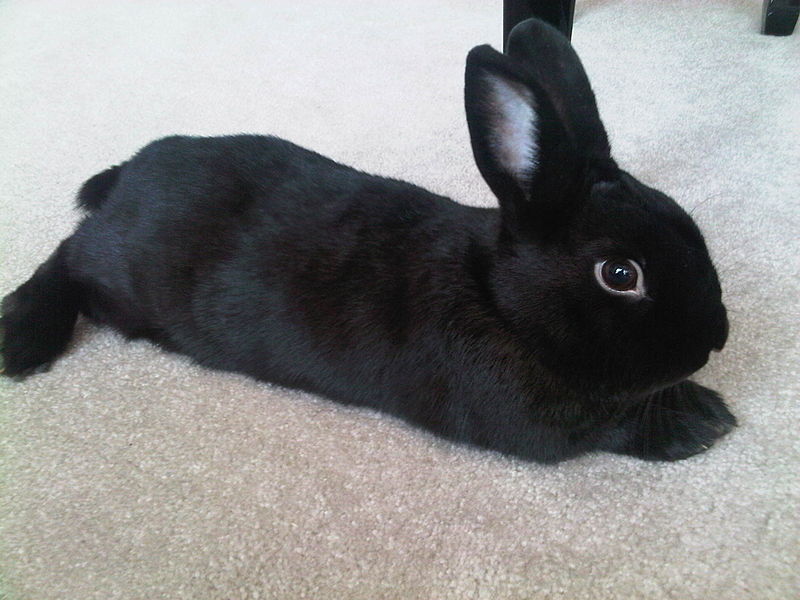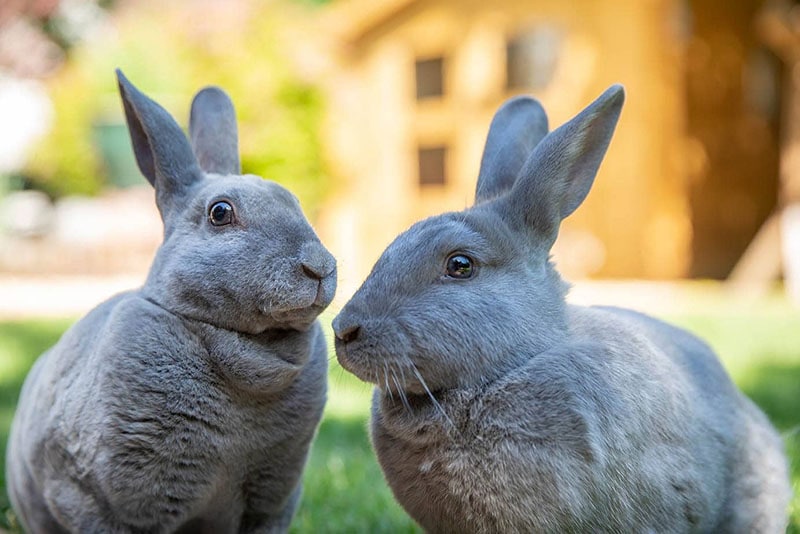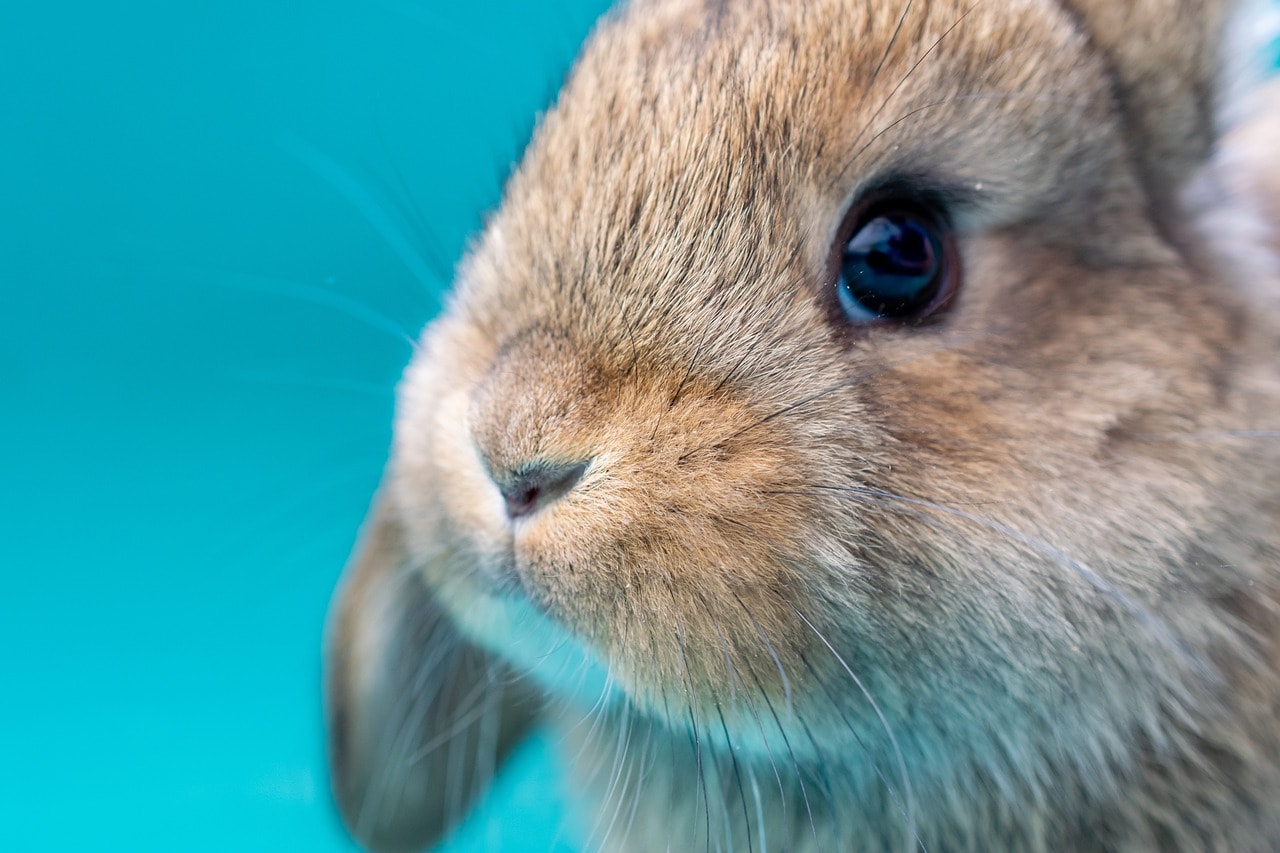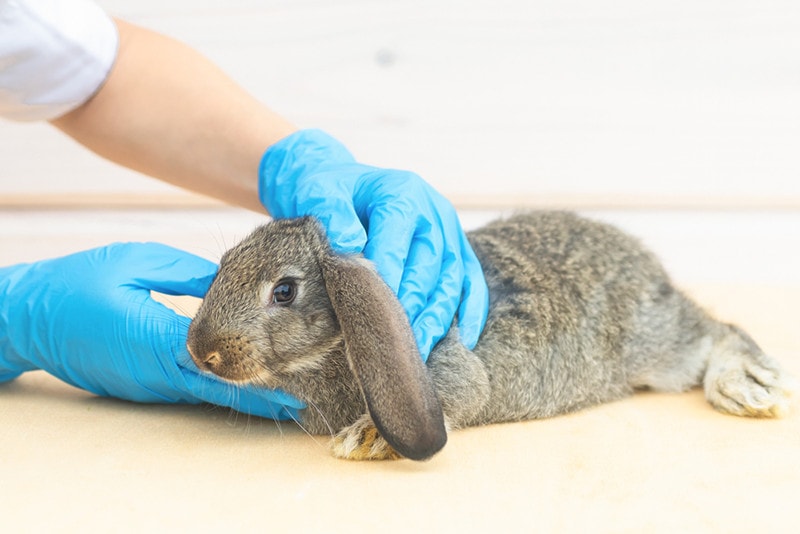Havana Rabbit Breed Info: Pictures, Care Guide, Lifespan & Traits

Updated on

Click to Skip Ahead
The Havana rabbit is a charming medium-sized bunny that sports a rich and shiny coat. It’s their coat that inspired their name, contrary to what you might expect. Their name was inspired by the brown fur that resembles a Cuban cigar, not because they come from Cuba. The rabbits originated in the Netherlands over 100 years ago. There is so much more to learn about this breed, especially if you are considering one as a pet, but we’ll cover everything you need to know in this article. Let’s have a look!
| Size: | Medium |
| Weight: | 4.5–6.5 pounds |
| Lifespan: | 5–8 years |
| Similar Breeds: | Dutch Rabbit, Holland Lop, Netherland Dwarf |
| Suitable for: | Rabbit owners with all levels of experience, families with children, indoor/outdoor |
| Temperament: | playful, friendly, affectionate, intelligent |
The Havana’s story began in the 1800s when a brown rabbit was born from a Dutch doe in Holland. The rich, deep brown coat inspired breeders to develop a new breed, which they named after the chocolate color of Cuban cigars found in the city of Havana.
This medium-sized rabbit is loved for its satin-like fur and is a popular pet and competitive show rabbit. Rabbit owners adore this breed for its affectionate and playful nature, and they are considered one of the calmest breeds of rabbits around. The Havana is recognized in four color varieties by the American Rabbit Breeders Association: chocolate, black, blue, and broken.
Havana Rabbit Characteristics
How Much Do These Rabbits Cost?
Havana rabbits are a popular breed for show rabbits and as family pets, which makes them a breed that you can generally find at your local pet store. However, it is always best to find a reputable breeder to ensure you are purchasing a healthy and well-cared-for rabbit. You can occasionally find Havana at a rescue center if you are patient enough.
The price of a Havana rabbit will depend on where you get it. They typically cost $20–$40, but if it is a show-quality rabbit or a rare color, it can cost up to $100.
The costs don’t stop there. Caring for your rabbit involves one-time and ongoing expenses that you must also consider. You will need to regularly purchase fresh vegetables, hay, and pellets, which can cost around $40–$50 a month, as well as bedding and toys. You will also need to budget for routine veterinary checkups and medical costs in case of an emergency.

Temperament & Intelligence of the Havana Rabbit
Havana Rabbits are known to be one of the calmest breeds around. They are sweet and friendly little bunnies that easily get along and bond with their human family. They are also playful and love attention. A Havana rabbit will happily roam indoors and outdoors and loves interacting with its owner.
They are also intelligent, which makes training them easier than other breeds. However, you will still need a great deal of patience when it comes to training. Although they’re smart, they’re harder to train than a dog or cat.
Do These Rabbits Make Good Pets? 👪
Havana Rabbits make excellent pets, whether you are a large family, a young single, a retired senior, or a family with rabbit-loving children. Their relaxed nature makes them ideal companions for seniors, and since they’re affectionate, they will get along with just about anyone. However, because of their size, caution needs to be taken with very small kids.
Does This Rabbit Get Along With Other Pets?
Havana rabbits are social bunnies that get along with other rabbits, given they are brought up together. On that note, if you decide to keep more than one rabbit of different sexes, be sure to have them neutered if you don’t plan on having kittens!
Havana rabbits typically get along with other family pets if the cats and dogs are well-socialized, and your Havana grows up with them. Again, because of its size and the prey drives of dogs or cats, it’s best to keep your Havana supervised around other pets.
Things to Know When Owning a Havana Rabbit:
Rabbits are generally easier to care for than dogs and cats, but they still require veterinary checkups, grooming, and interaction with their owners. Here are some of the aspects of rabbit ownership you must consider when raising a healthy rabbit.
Food & Diet Requirements 🥕
Just like all breeds of rabbits, your Havana will need a well-balanced diet that consists of about 80% good-quality hay, leafy greens, fruits and vegetables, and pellets. Be cautious when choosing fruit and veggies for your rabbit since some contain too much sugar, and others may be harmful.
Some of the best vegetables and fruit to feed include carrot tops, apples, strawberries, broccoli, kale, and cabbage. Your Havana rabbits also require access to fresh, clean water at all times, and it’s important to have a water bowl that is replaced daily or a water bottle.
Habitat & Hutch Requirements 🏠
Havana Rabbits can happily live indoors or outdoors, but either way, their hutch needs to provide warmth and safety, and it needs to be well-ventilated and big enough for your rabbit to stretch, hop, and stand up. It should also be sturdy with lockable doors for safety. The floor of the hutch should be solid and not made from wire since it can lead to painful foot problems.
If the hutch is outside, it must protect your rabbit from the elements, such as rain, wind, direct sunlight, and extreme temperatures. It should also be raised off the ground to protect it from predators. If your hutch is indoors, ensure you take your rabbit out to get some much-needed sun.
It should also include an enclosed area where your rabbit can retreat if it feels cold, tired, or scared. A rabbit’s hutch should be cleaned and maintained regularly by removing old water, uneaten food, and soiled bedding.
Exercise & Sleeping Needs 🐇
Havana Rabbits are not an energetic breed, but they are still playful and active and will require daily exercise and mental stimulation. You can provide your rabbit with toys to encourage jumping, chewing, and navigating, and create a play area using cardboard boxes and tunnels.
Your pet needs enough room in the rabbit run or yard to run and hop around, and you can hide food so they can practice foraging. Your Rabbit will sleep about 6–8 hours daily and need somewhere warm, quiet, and dark to rest.
Training 🥎
While the Havana Rabbit is intelligent, it is more difficult to potty train than a dog. However, it’s not impossible, and with a little patience, you can get your Havana Rabbit potty trained. You can place several litter boxes around the house to reduce the need for your rabbit to travel and grow accustomed to using a litter box. One of the easiest things to do is place your rabbit’s hay hop in an area where they must sit in the litter box to eat because rabbits like to eat and poop at the same time.
When training to do tricks like turning in circles, the best method is positive reinforcement to reinforce good behavior and improve how they respond to commands.
Grooming ✂️
The Havana Rabbit has a short coat that doesn’t require much maintenance. However, to reduce shedding, you can brush its coat once a week with a slicker brush and increase it to at least twice a week around spring when shedding season hits. Grooming is also a great way to improve your bond and show affection. Trim your Havana’s nails every 6–8 weeks to prevent them from getting too long and potentially causing injury.
Lifespan and Health Conditions 🏥
The average lifespan of a Havana Rabbit is 5– 8 years but can sometimes be longer if they are well-cared for. They are smaller rabbits and generally healthier than some breeds, and when properly looked after and fed, they can live for over a decade.
The Havana Rabbit is typically a healthy species, but like other rabbits, they are prone to a few health issues, such as:
- Ear mites
- Skin mites
- Flystrike
- Dental issues
- Respiratory issues
- Eye problems
- Reproductive organ issues
You will need to check your rabbit’s mouth regularly for ingrown teeth and ensure they have enough hay to chew on to file them down. Ensure your rabbit gets regular health checks and vaccinations to prevent and catch any health issues early.
 Male vs Female
Male vs Female
Male rabbits are a better option if this is your first time owning one because they are typically less territorial and have fewer destructive habits. They are also considered calmer than female rabbits. However, this is just a generalization, and each rabbit will be unique in its temperament and behavior. It’s best to meet the rabbit first and then make a decision.
Having your rabbit neutered or spayed can also help reduce aggressive behaviors, and unneutered males also tend to mark their territory by spraying urine.
3 Little-Known Facts About Havana Rabbits
1. The Havana’s Coat Color Resembles a Cuban Cigar, Which Is How It Got Its Name
2. Havana Rabbits Are Kept as Pets and Show Rabbits and Processed for Their Meat
3. The Havana Rabbit Is Recognized in Four Color Varieties by the American Rabbit Breeders Association: Chocolate, Black, Blue, and Broken
Final Thoughts
The Havana Rabbit is the ideal pet for any family, whether you are on your own or have children. They are also a great choice if this is your first time being a parent to a rabbit. They have a reputation for being one of the calmest breeds, and they are loved for their soft and shiny coat.
Rabbits of any breed require more attention and care than some may assume, but they make great pets! Havana rabbits are easy to handle but need a durable hutch, plenty of running space, interactions with their owners, and a well-balanced diet.
Featured Image Credit: Havana Rabbit (Image Credit: Mjm91, Wikimedia Commons CC BY-SA 3.0)










